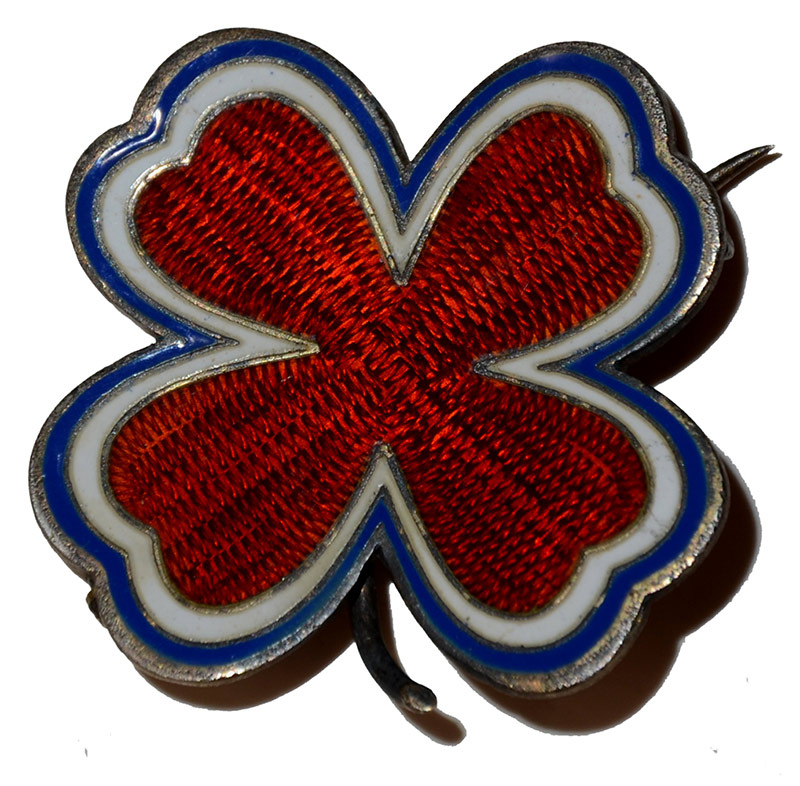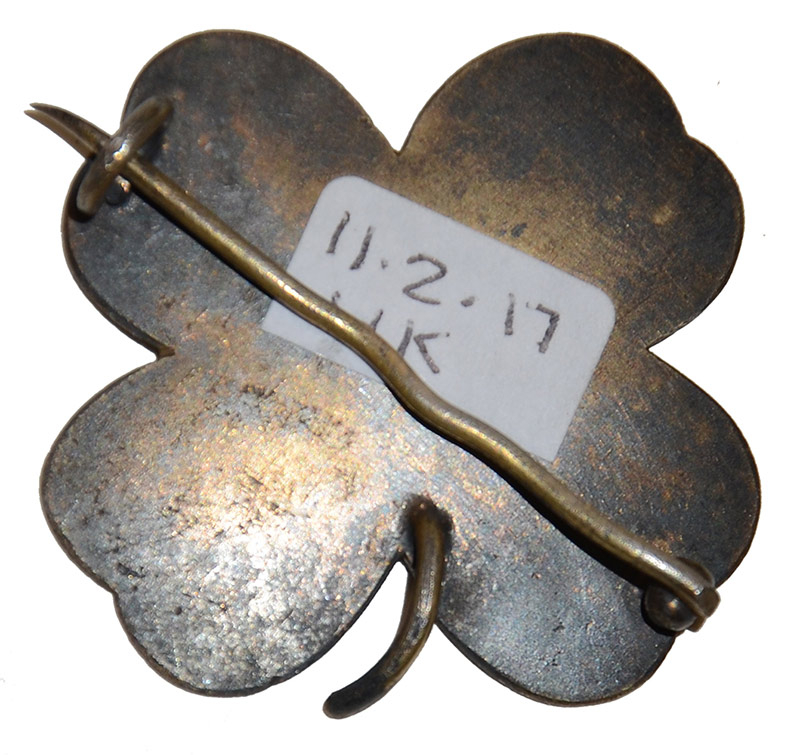site search
online catalog
SPANISH AMERICAN WAR SECOND CORPS BADGE

Hover to zoom


$350.00 SOLD
Quantity Available: None
Item Code: 480-193
Brigades of the Second Army Corps saw action in both Cuba and Puerto Rico during the Spanish-American War. The War Department re-authorized corps badges in General Orders No. 99 on July 15, 1898, for use, “when the land forces of the United States are organized into army corps, divisions and brigades.” As in the Civil War the shape of the badge conveyed the army corps and the color, the division. The four leaf clover was chosen for the Second Corps (about the only insignia with any relationship to its Civil War predecessor) and the standard colors of red, white, and blue designated the first, second and third divisions. Enlisted men were to wear them on the front of the hat or center of the forage cap and upon the left breast by officers, though photographs make clear this was loosely adhered to.
This is a nice commercially produced enameled pin with a pin back and gilt edge. The general orders specified the badges were to be of felt, but added, “if preferred, officers and enlisted men are authorized to wear the proper badge made of gold or yellow metal enameled in the proper colors.” The use of a red center, bordered with white and blue follows the regulations for officers and enlisted men belonging to the corps, but not attached to a particular division. The pin, hinge, and clasp hook are in place and secure. A separate, thick wire fastened to the back curls down to form the stem of clover. There is minor rubbing to the edges of the pin. The enameling is perfect and the color vivid.
The Second Corps was constituted May 7, 1898, composed entirely of volunteer troops, posted to Camp Alger, and eventually to other camps in the south. In addition to corps headquarters, it consisted of three divisions, the first two with three brigades each and the third, never fully organized, with two. Two of the corps’ brigades made it into combat: Duffield’s brigade of the 3rd Division saw action in Cuba at Aguadores, near Santiago de Cuba, on July 1, 1898, where they launched an attack to divert Spanish attention and troops from the main objectives: San Juan Hill and El Caney. Their blackpowder .45-70 trapdoor rifles, however, revealed their positions to the Spanish Mausers firing smokeless powder and to Spanish artillery, and the attack was not pressed. Garretson’s brigade of the First Division was sent to Puerto Rico to serve under Nelson Miles, seeing action at the battles of Yuaco and Guayama. An armistice brought fighting between Spanish and U.S. units to a halt in mid-August. Units remaining in the states, however, did not escape losses, being involved in the ongoing fight against the typhoid fever epidemic of 1898. The corps was reduced in February 1899 to three brigades and officially discontinued on May 3.
This is a nice example of a scarce regulation U.S. army insignia. [sr] [ph:L]
~~~~~~~~~~~~~~~~~~~~~~~~~~~~~~~~~~~
THIS ITEM, AS WITH ALL OTHER ITEMS AVAILABLE ON OUR WEB SITE,
MAY BE PURCHASED THROUGH OUR LAYAWAY PROGRAM.
CLICK HERE FOR OUR POLICIES AND TERMS.
THANK YOU!
Inquire About SPANISH AMERICAN WAR SECOND CORPS BADGE
Most Popular
Historical Firearms Stolen From The National Civil War Museum In Harrisburg, Pa »
Theft From Gravesite Of Gen. John Reynolds »
Selection Of Unframed Prints By Don Troiani »
Fine Condition Brass Infantry Bugle Insignia »
Large English Bowie Knife With Sheath 1870’S – 1880’S »
Imported (Clauberg) Us Model 1860 Light Cavalry Officer's Saber »
featured item
VERY SCARCE US GOVERNMENT PURCHASE MERRILL RIFLE
This Merrill breechloading rifle is one of just 566 contracted for by the US government in December 1861 and delivered from August through December 1862, inspected and marked by Zadock Butt, and known to have been issued to several Union regiments,… (490-7012). Learn More »


